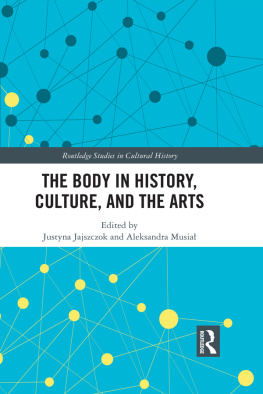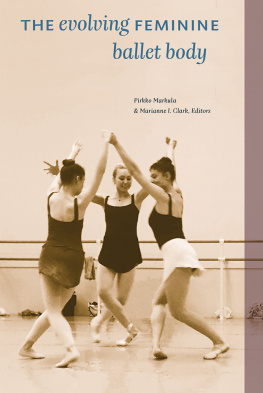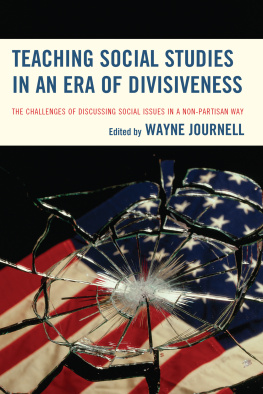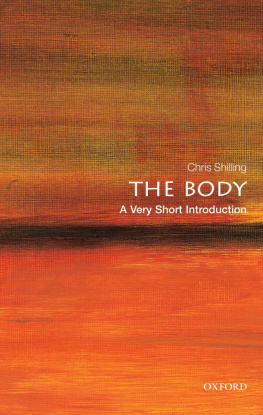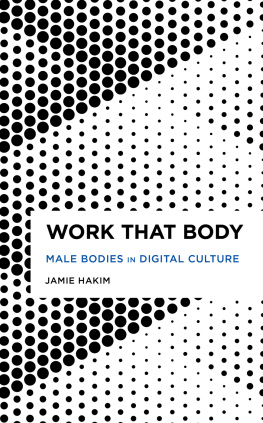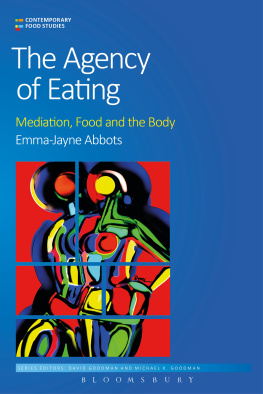The Body in History, Culture, and the Arts
The aim of this book is to explore the body in various historical contexts and to take it as a point of departure for broader historiographical projects. The chapters in the volume present the ways in which the body constitutes a valuable and productive object of historical analysis, especially as a lens through which to trace histories of social, political, and cultural phenomena and processes. More specifically, the authors use the body as a tool for critical reexamination of particular histories of human experience and of societal and cultural practices, thus contributing to the burgeoning area of body history in terms of both specific case studies as well as historiography in general.
Justyna Jajszczok is an Assistant Professor at the Institute of English, University of Silesia, Katowice, Poland.
Aleksandra Musia is an Assistant Professor at the Institute of English Cultures and Literatures, University of Silesia, Katowice, Poland.
Routledge Studies in Cultural History
The Transatlantic Genealogy of American Anglo-Saxonism
Michael Modarelli
Anxieties of Belonging in Settler Colonialism
Australia, Race and Place
Lisa Slater
Families, Values, and the Transfer of Knowledge in Northern Societies, 15002000
Edited by Ulla Aatsinki, Johanna Annola, and Mervi Kaarninen
A History of Euphoria
The Perception and Misperception of Health and Well-Being
Christopher Milnes
The History of the Vespa
An Italian Miracle
Andrea Rapini
Children and Globalization
Multidisciplinary Perspectives
Edited by Hoda Mahmoudi and Steven Mintz
A History of Shaolin
Buddhism, Kung Fu and Identity
Lu Zhouxiang
Heroism as a Global Phenomenon in Contemporary Culture
Edited by Barbara Korte, Simon Wendt and Nicole Falkenhayner
The Body in History, Culture, and the Arts
Edited by Justyna Jajszczok and Aleksandra Musia
For more information about this series, please visit: www.routledge.com/Routledge-Studies-in-Cultural-History/book-series/SE0367
First published 2019
by Routledge
52 Vanderbilt Avenue, New York, NY 10017
and by Routledge
2 Park Square, Milton Park, Abingdon, Oxon, OX14 4RN
Routledge is an imprint of the Taylor & Francis Group, an informa business
2019 Taylor & Francis
The right of Justyna Jajszczok and Aleksandra Musia to be identified as the authors of the editorial material, and of the authors for their individual chapters, has been asserted in accordance with sections 77 and 78 of the Copyright, Designs and Patents Act 1988.
All rights reserved. No part of this book may be reprinted or reproduced or utilised in any form or by any electronic, mechanical, or other means, now known or hereafter invented, including photocopying and recording, or in any information storage or retrieval system, without permission in writing from the publishers.
Trademark notice: Product or corporate names may be trademarks or registered trademarks, and are used only for identification and explanation without intent to infringe.
Library of Congress Cataloging-in-Publication Data
A catalog record for this title has been requested
ISBN: 978-0-367-20955-1 (hbk)
ISBN: 978-0-429-26439-9 (ebk)
Typeset in Sabon
by Apex CoVantage, LLC
Contents
JUSTYNA JAJSZCZOK AND ALEKSANDRA MUSIA
PART I
The Liminal Body
WILLIAM LEEMING
JACQUELINE SUSANN HOLLER
CARLO BOVOLO
PART II
The Modern Body
STEFFAN BLAYNEY
CHRISTOPHER E. FORTH
PART III
The Visual Body
CLAUDE LACROIX
KYLO-PATRICK R. HART
PART IV
The Punished Body
WILLEMIJN RUBERG
CALVINJOHN SMILEY
PART V
The Entangled Body
ANNA KISIEL
DAVID SCHAUFFLER
Guide
Justyna Jajszczok and Aleksandra Musia
It is no easy task to write an adequate introduction to a collection of essays that undertake to consider the body at intersections with history in such a disparate array of periods, contexts, and even methods. But while an account of the body in history that would totalize the ways in which the issue might be approached remains elusive, an endeavor such as this volume is not necessarily hopeless as a cohesive project. Evidently, the body remains productive as a category of historical analysis (Blayney, in this volume), as testified to by the breadth of subjects analyzed and discussed in this book: the variety itself illustrates how useful the body proves as an avenue into a better understanding of history. This entanglement of the human body with the pastin so many ways its past, after allis of course not surprising since, as Donna McCormack put it, [f]lesh is woven into history as both the bloody deaths necessary to achieve the desired goals and the skin on which it has become possible to write these new foundational narratives (2014, 2).
Indeed, the body, historically contextualized, has been studied in relation to a whole range of disciplines and approaches. To mention only some of the more recent cases, following the pioneering works that tended to focus on bodies in given historical periods such as the Renaissance or Early Modernity, some recent transhistorical studies have focused on the relationship between the body and more narrowly defined areas of critical inquiry, such as the history of human sexuality (Toulalan and Fisher 2013) or the history of disability and impairment (Mounsey and Booth 2016). Another trend has been to provide organ-by-organ histories, which look at the human body as a unit whose particular historyor histories of its component partsmay be traced, especially in the context of medical and scientific history (Alberti 2016; Aldersey-Williams 2013). There has also been interest in examining continuity and change in bodily practices and in attitudes toward the body across history but in a defined geographical/cultural location, either in Europe from prehistory to now (Robb and Harris 2013) or in the contemporary West as opposed to its past (Alberti 2016).
This volume takes a less focalized approach as a whole, and instead, by the juxtaposition of its parts and chapters, reveals the variously conceptualized body as a fundamental category of historical study, its peculiar but indelible significance stemming out of its somewhat dual nature. The first aspect of this duality may be illustrated by the observation that the body turns out to function as a potent and ubiquitous metaphor. Since it is the most immediate apparatus through which we can observe and interact with the outside world, our perception of reality is inextricably filtered through our bodies. It is no surprise, then, that our own sense of the body so often becomes a form of language used to translate, or perhaps even metaphorically tame, elements of the external world. Consider the two great unknowns of human exploration: space and oceans. Both are beyond human reach, one too distant, the other too deep; both are immense and still largely undiscovered, perhaps even unknowable; both, by the virtue of their sheer scale, are putting human beings in their right place, insignificant specks in the grander scheme of things. Perhaps this is the reason why we use the metaphor of the body when describing and explaining the universe: to rhetorically reduce the universe to a manageable concept that may be easier to accept and understand. And so celestial bodies and bodies of water bring to mind large quantities and vast expanses but, through their corporeal associations, can also inspire familiarity and affinity.

